The raspberry tree or standard raspberry is becoming increasingly popular among gardeners and summer residents. The healthy and tasty berry grows on almost every plot of land, but this variety of unpretentious shrubs produces significantly more fruit with simple care.
|
Standard raspberry Tarusa |
| Content:
|
Raspberry trees are of great interest to landscape designers and flower growers. With the help of such plants you can significantly transform a garden, flower garden, or park. The universal culture simultaneously combines high decorativeness, attractiveness and fruits that are valuable in their composition.
What is the difference between an ordinary raspberry and a raspberry tree? What are the features of its planting and care? How to grow and propagate it? How to protect against diseases and pests? Answers to these and other questions can be found in this article.
Description of the plant
Let's say right away - there is no raspberry tree, in fact we are talking about a standard raspberry, the branches of which are distinguished by denser wood, erect, without drooping tops and not requiring support.
To form a tree, standard raspberry varieties are used. Its average height is about one and a half to two meters. A tall, dense bush is obtained by pinching the top and timely pruning of branches. The remaining stems become stronger and stronger.
|
Such raspberries can withstand sharp gusts of wind, heavy rainfall, and do not require support or additional support. |
But, like any other crops, the raspberry tree has its positive and negative qualities.
Advantages:
- easy care, unpretentiousness in cultivation;
- high resistance to cold and disease;
- high yield, significantly higher than bush raspberries;
- straight shoots without thorns are convenient for harvesting;
- large, sweet fruits with dense pulp and a minimal amount of seeds;
- strong and strong trunk that does not require garter;
- each plant receives maximum lighting and good air exchange.
Flaws
- Some varieties have fruits that are less fragrant than regular raspberries.
- The maintainability of standard raspberries does not allow them to be grown in the Middle Zone and northern regions. The second harvest does not have time to ripen before the arrival of cold weather.
- The minimum amount of root shoots does not thicken the plantings, but also makes it impossible to propagate berry crops with its help.
Planting a raspberry tree
A favorable time for planting seedlings is spring. It is necessary to take into account the climatic features of your region and choose a period with established warm weather with an average temperature of at least fifteen degrees. Seedlings with a closed root system can be planted in early autumn. Plants must have time to take root before the onset of serious cold weather and prepare for real frosts.
Selection and preparation of a landing site
When choosing a planting site, it is necessary to take into account several important factors - the illumination of the site, the composition of the soil, neighboring plants and predecessor crops.
It is better to plant raspberries in an open, sunny area, where the seedlings will receive light and warmth throughout the day. Raspberries do not tolerate drafts and respond positively to direct sunlight.
|
When planting raspberry trees, you should not choose low-lying areas and places with close groundwater. |
The soil must be fertile, slightly acidic or neutral, but not acidic. A month to a month and a half before planting, humus, wood ash and peat (for looseness) are added to the soil, having previously cleared it of plant residues. For each square meter, one and a half buckets of humus and five hundred grams of ash are enough.You can add a mixture of garden soil, peat and humus to each hole individually.
Plants such as potatoes, strawberries, wild strawberries, cabbage, and tomatoes suffer from the same diseases as raspberries and are affected by similar pests. That is why it is recommended to place seedlings away from these plant representatives, as well as from tall fruit trees.
Important! You should not grow raspberries in an area where other varieties of the same berries previously grew. This will negatively affect the future harvest.
Landing pattern
The diameter of the planting hole is about fifty centimeters, the depth is forty centimeters. The interval between plants is up to one meter, between rows - up to two meters.
Landing technology
One teaspoon of superphosphate is poured into each hole, a nutrient substrate of peat and humus is poured, and watered. After the water has settled, a seedling is placed in the center and its roots are straightened (if the root system is open). Then they sprinkle it with earth, compact it slightly, apply a mulch layer, and water it abundantly (about five liters per bush). The root collar is buried two to three centimeters. After this, the shoots are pruned to twenty-five to thirty centimeters.
Raspberry tree care
Proper care is the basis for obtaining a rich and high-quality harvest. Each stage must be carried out competently, regularly and in a timely manner.
Watering
Irrigation volumes vary depending on the stage of crop development. For example, during the period of active growth, moisture is especially important for raspberries. At the stage of formation of the ovary and ripening of the berries, it is necessary to water the bushes once or twice a week, approximately eight to ten liters for each plant.If there is heavy rainfall, irrigation procedures are not carried out.
|
With good care, standard raspberries grow very large |
Top dressing
During the warm season, raspberry crops are fed at least three times.
- During bud break, fertilizers containing nitrogen are applied. For example, for every meter of land - fifty grams of nitroammophoska. You can prepare a solution from saltpeter or urea - fifty grams per ten liters of water. Or add one liter of slurry to a bucket of water. This volume is enough for three bushes.
- At the beginning of flowering - superphosphate. For one large bucket of water - ten grams of the substance.
- During the ripening period of berries - ash, one glass per bucket of water. Each plant requires three liters of fertilizer.
Don't forget to read:
Raspberry tree Fairy Tale: description, photo, rules of planting and care ⇒
Weeding and mulching
Weeding and loosening rids raspberry plantings of weeds, prevents the soil from overheating, and also maintains normal air exchange and promotes the development of the root system.
Mulch layer It is advisable to apply immediately after planting. It will protect plants from drought, reduce the amount of watering and weeding, and become a reliable barrier to weeds. Peat, humus, dry grass or straw can be used as mulch. The thickness of the protective layer is at least five centimeters.
Trimming and shaping
The formation of a raspberry tree begins in the year of planting, when its height exceeds 50 - 60 centimeters. It is recommended to trim the tops by five to ten centimeters. This pruning stimulates the growth of side shoots. There is no need to trim anything else this season.
The next season, in the spring, a second pruning is carried out - now all overgrown branches are shortened by ten to fifteen centimeters. After this, active growth of fruiting shoots begins, on which the entire crop is formed.
After harvesting, all fruit-bearing raspberry trees are removed, like regular raspberries, allowing young replacement shoots to develop.
Preparing for winter
Preparatory work begins after autumn pruning. Each tree, and especially varieties with low and medium levels of winter hardiness, must be reliably protected from frosty winters. First, a thick layer of fallen leaves, sawdust, straw, peat or other mulching material at least ten to fifteen centimeters thick is applied around each crop. Then the bushes are bent to the ground, secured and covered. The cover can be spruce branches, agrofibre, and in winter - a thick layer of snow.
Reproduction methods
The most popular methods of propagating a raspberry tree are cuttings and use of shoots. Since the root shoots of standard raspberries grow in minimal quantities, cuttings are still used more often.
Basal shoots
A root sprout at least twenty centimeters high is dug up along with a small section of the root, washed in a pink solution of potassium permanganate and immediately planted in prepared holes.
|
Rooted cuttings |
Green cuttings
Green cuttings are cut in spring. Their average length is about twenty centimeters. At the bottom of the seedling, the leaves are completely removed. The cuttings are planted in a mixture of equal parts of peat and sand and kept in a warm room until roots form.In the summer, the seedlings will be ready to be transplanted to a permanent location.
Root cuttings
To obtain cuttings, carefully dig up an adult bush, select the strongest root branches with one or two buds, separate them, plant them in a container with a sand-peat mixture and leave them in room conditions until germination.
Varieties of raspberry trees
- Tarusa - the most popular variety, producing two harvests per year. Its powerful straight shoots are distinguished by the absence of thorns. Large bright red berries have a delicate taste and can retain their presentation for a long time. The plant perfectly resists diseases and pests.
- Fairy tale – a high-yielding and disease-resistant variety with a medium ripening period. Sweet berries are distinguished by their raspberry hue and raspberry aroma. They retain all their positive qualities for a long time. Due to low winter hardiness, additional shelter for the winter period is required.
- Bogatyr – an early frost-resistant variety that produces consistently high and high-quality yields (with proper care). Consists of strong and durable prickly stems with dark crimson sweet berries. The fruiting period lasts from mid-July to the end of September. The fruits are suitable for drying, freezing, and canning.
- Galaxy – medium in height and medium-early in terms of ripening period. Consistently produces high yields. Large burgundy-red berries are distinguished by juicy pulp and a pleasant raspberry aroma. It is used for fresh consumption and for processing. Not suitable for transportation and long-term storage.
- Benefit – a winter-hardy and fungus-resistant variety of Polish origin. It is versatile in use, but has a short shelf life when fresh.Large cone-shaped fruits are dark red. The pulp is dense and sweet in taste. Harvesting begins in the second half of summer.
- Atlant – a variety resistant to frost and numerous diseases. It consists of strong one and a half meter shoots with small thorns at the bottom of the bush. Red and elongated berries are distinguished by dense pulp and a pleasant dessert taste. From one bush you can get about four kilograms of berries.
- Penguin – a medium-sized variety, reaching 130 centimeters in height. It begins to bear fruit in the second half of the summer season. In warm southern climates, sweet, round, elongated berries can be harvested until early November. The fruits withstand transportation perfectly, but overripe berries do not hang on the bushes for a long time - they fall off after about five to six days.
- Sturdy - a tall variety, often reaching a two-meter mark. Already in June - July it produces large cone-shaped berries of a ruby hue. Excellent propagation by cuttings. In a new place it quickly adapts and takes root well. Consistently produces high yields - up to four kilograms of berries per bush.
- Glen Ample – a mid-late drought-resistant variety of Scottish origin, not afraid of cold weather, resistant to pests and diseases. Begins to bear fruit at the end of June. It is characterized by increased resistance to pests and major diseases.
- Octavia – a high-yielding variety of English origin with medium-height shoots without thorns. Plants tolerate frosts well down to thirty degrees. Large bright red berries are perfect for transportation, as they are able to retain all their best qualities for a long time.After prolonged rains, the fruits do not fall off and remain tasty and aromatic.
- Canadian – a tall and very productive variety that does not require complex care. A rich harvest of incredibly juicy and sweet berries is suitable for long-term transportation and storage. With quality care and favorable climatic conditions, you can get from seven to ten kilograms of fruit from one bush.
Do not miss:
Diseases and pests
Standard raspberries are highly resistant to diseases and pests, but in rare cases such problems arise.
Possible pests are weevils, raspberry flies and moths, and raspberry beetles. As a preventative measure, it is recommended to spray the plantings in early spring, even before the buds swell.
Don't forget to read:
|
To prevent fungal diseases, at the beginning of spring, raspberries are treated with one percent Bordeaux mixture, and before flowering begins, with a solution based on the drug “Topaz” (one tablespoon per bucket of water). |
To prepare the solution, use various insecticides or use ready-made products. To destroy uninvited guests, you will need the help of modern insecticides and proven folk recipes. For example, mustard powder and wood ash - for dusting or preparing a solution, tansy infusion.
Do not miss:
A raspberry tree in a garden plot or at the dacha is not only its decoration, but also a rich harvest of sweet, large and healthy berries with simple care.
You might be interested in:

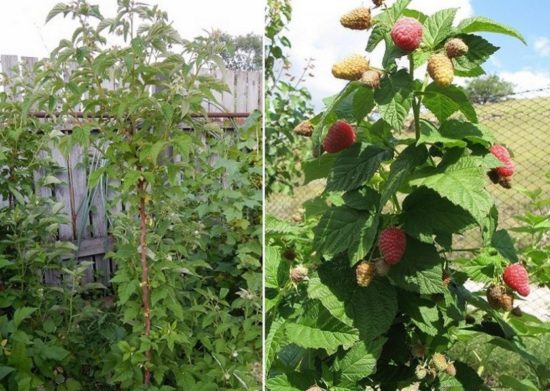
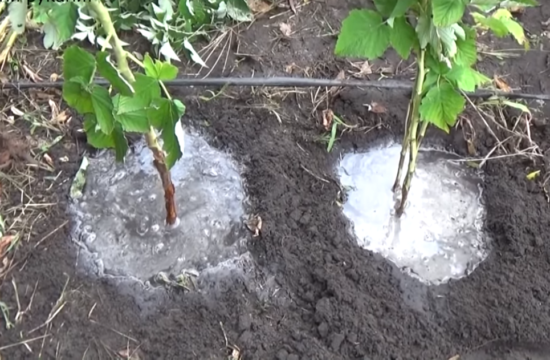
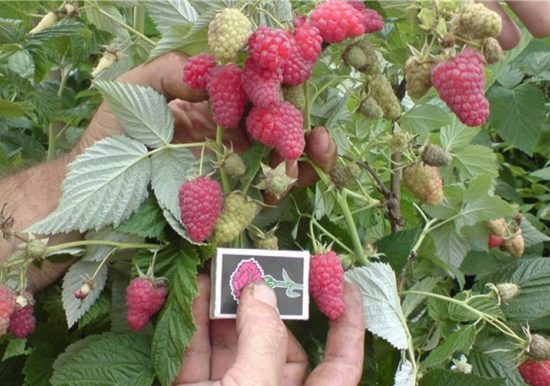


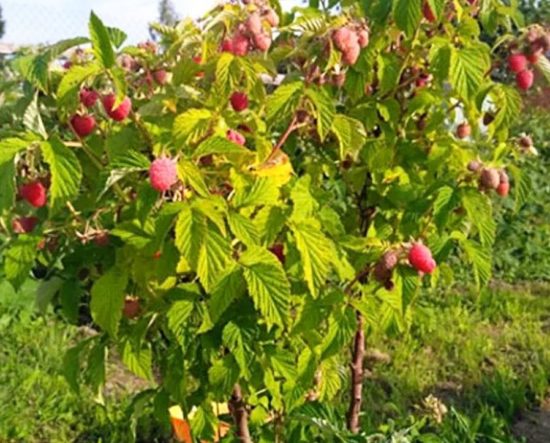

 (4 ratings, average: 4,75 out of 5)
(4 ratings, average: 4,75 out of 5) CUCUMBERS NEVER GET SICK, I'VE BEEN USING ONLY THIS FOR 40 YEARS! I SHARE A SECRET WITH YOU, CUCUMBERS ARE LIKE THE PICTURE!
CUCUMBERS NEVER GET SICK, I'VE BEEN USING ONLY THIS FOR 40 YEARS! I SHARE A SECRET WITH YOU, CUCUMBERS ARE LIKE THE PICTURE!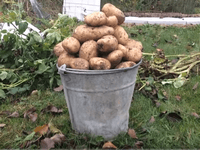 You can dig a bucket of potatoes from each bush. Do you think these are fairy tales? Watch the video
You can dig a bucket of potatoes from each bush. Do you think these are fairy tales? Watch the video
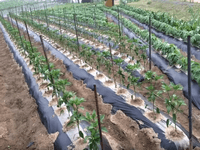 How our fellow gardeners work in Korea. There is a lot to learn and just fun to watch.
How our fellow gardeners work in Korea. There is a lot to learn and just fun to watch. Eye trainer. The author claims that with daily viewing, vision is restored. They don't charge money for views.
Eye trainer. The author claims that with daily viewing, vision is restored. They don't charge money for views.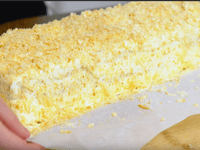 A 3-ingredient cake recipe in 30 minutes is better than Napoleon. Simple and very tasty.
A 3-ingredient cake recipe in 30 minutes is better than Napoleon. Simple and very tasty. Therapeutic exercises for cervical osteochondrosis. A complete set of exercises.
Therapeutic exercises for cervical osteochondrosis. A complete set of exercises. Which indoor plants match your zodiac sign?
Which indoor plants match your zodiac sign? What about them? Excursion to German dachas.
What about them? Excursion to German dachas.